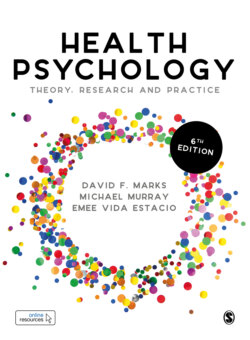Читать книгу Health Psychology - Michael Murray - Страница 33
На сайте Литреса книга снята с продажи.
The Endocrine System
ОглавлениеThe endocrine system consists of the ductless glands of the body and the hormones produced by those glands. Endocrine glands release their secretions directly into the intercellular fluid or into the bloodstream. Hormones act as ‘messengers’ carried by the bloodstream to different cells in the body, which interpret these messages and act on them. In regulating the functions of organs in the body, the ES maintains physiological homeostasis. Cellular metabolism, reproduction, sexual development, sugar and mineral homeostasis, heart rate and digestion are processes regulated by the actions of hormones.
Without hormones we could not grow, maintain a constant temperature, produce offspring, or perform the essential actions and functions of our everyday lives. The ES provides an electrochemical connection from the hypothalamus to the organs that control the metabolism, growth, development and reproduction. The ES operates 24/7 for the entire lifespan. It operates throughout sleep and waking – without tea breaks, weekends or holidays.
The main endocrine glands are the pituitary (anterior and posterior lobes), thyroid, parathyroid, adrenal (cortex and medulla), pancreas and gonads. The pituitary gland is attached to the hypothalamus of the lower forebrain. The thyroid gland consists of two lateral masses, connected by a cross bridge, that are attached to the trachea. They are slightly inferior to the larynx. The parathyroid glands are four masses of tissue, two embedded posterior in each lateral mass of the thyroid gland. One adrenal gland is located on top of each kidney. The cortex is the outer layer of the adrenal gland. The medulla is the inner core. The pancreas is along the lower curvature of the stomach, close to where it meets the first region of the small intestine, the duodenum. The gonads are in the pelvic cavity.
Figure 2.9 The endocrine system
Many studies indicate that hormonal changes influence cognition. For example, research by Sherwin (1997) suggested that estrogen helps to maintain verbal memory and enhances the capacity for new learning in women, whereas other cognitive functions, such as verbal memory, are seemingly unaffected by this steroid hormone. Even the human imagination is related to hormones. Drake et al. (2000) found evidence that both estrogen and testosterone have associations with cognitive performance and that estrogen may enhance, and depress, specific cognitive skills. Wassell et al. (2015) found that the strength and vividness of imagery is greater for females in the mid-luteal phase (second half of menstrual cycle) than for both females in the late follicular phase (first half of cycle) and males. The changes in hormone concentrations over time provide a possible basis for individual differences in visual mental imagery, cognitive functions and mental disorders.
Endocrine glands release hormones as a response to three kinds of stimuli: (1) hormones from other endocrine glands; (2) chemical characteristics of the blood (other than hormones); and (3) neural stimulation. Most hormone production is managed by a negative feedback system. The NS and certain endocrine tissues monitor the internal condition of the body. If action is required to maintain homeostasis, hormones are released, either directly by an endocrine gland or indirectly through the action of the hypothalamus of the brain, which stimulates other endocrine glands to release hormones. When homeostasis is restored, the corrective action is ceased. Thus, in negative feedback, when the subnormal condition has been rebalanced, the corrective action is stopped. One of the many vital functions that is taken care of by the ES is the circadian rhythm and clock.
